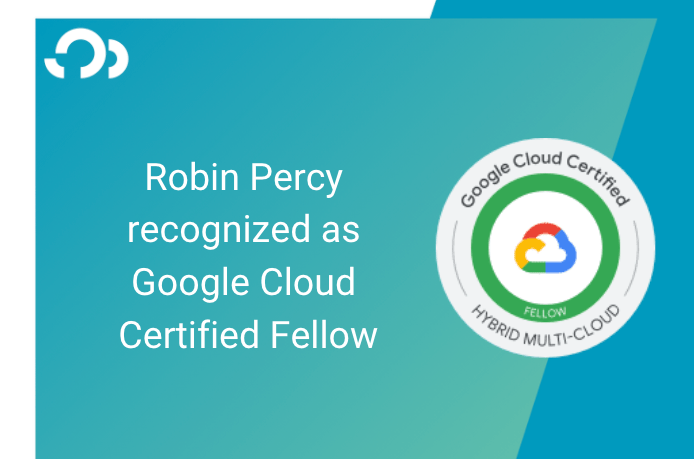Home / Blog / Why I Became a Google Cloud Certified Fellow in Hybrid Multi-Cloud
I am proud to announce that I've become a Google Cloud Certified Fellow in Hybrid Multi-Cloud. This fellowship is a relatively new program from Google Cloud, and I am honoured to be the 37th member to achieve the designation. As described on the program page:
The Google Cloud Certified Fellow program is for elite cloud architects and technical leaders who are experts in designing enterprise solutions. This certification program recognizes individuals with deep technical expertise who can translate business requirements into technical solutions using Anthos and Google Cloud.
Almost as humbling as the program's state goal is the process to achieve the designation. This process consists of a series of hands-on lab exams that test technical acumen as well as an interview with a panel of hybrid cloud experts. Despite every confidence that my time as CTO and Principal Consultant in OpsGuru was the exact experience necessary, preparing for the exams took significant time investment from myself, significant support from my partners in OpsGuru, and significant understanding from my partner in life, Heidi - all of whom I'm extremely grateful to and fortunate to have in my corner.
Now, with the end of the year approaching, and having had a chance to process the successful culmination of these efforts, I think it's a good time to reflect on why I felt this was an important goal to achieve.
First and foremost, I firmly believe that Hybrid Cloud will increasingly be the defining property of IT operations for large organizations. The future is here, but not evenly distributed across cloud providers. Each has its strengths and weaknesses - and none are infallible. The cloud with the most advanced data and analytics services may not be the most cost-effective for hosting your ERP. Even when all workloads are suitable for a single cloud, the provider itself is a failure domain that needs to be made redundant for mission-critical applications. But most importantly, cloud adoption is an ongoing process that must constantly adapt to changing business needs and market pressures. Those needs may dictate that some workloads be hosted on-premise, some in a preferred cloud provider, and others in whichever provider has the lowest latency to a given market.
Aside from the first-order benefits mentioned above, the technologies enabling Hybrid Cloud pay dividends well beyond platform-agnosticism. In fact, Hybrid Cloud is really just the natural and direct successor to the Cloud Native paradigm - and inherits many of the same advantages. Like Cloud Native, Hybrid Cloud is largely (so far) powered by Kubernetes and the ecosystem that has sprung up around it. This has led to a state of the art that enables fully-programmable infrastructure with policy-driven automation and unprecedented visibility into system behaviour. Google, as the birthplace of Kubernetes, was obviously a - if not the - key player in bringing about these new paradigms. So it was particularly compelling to join this new initiative to help lead organizations through the extremely valuable but challenging adoption process.
In short, Hybrid Multi-Cloud is quickly becoming the new norm and brings with it new levels of flexibility, reliability, and efficiency. These attributes are critical factors for large IT organizations. Unfortunately, large organizations also have the greatest obstacles to overcome - legacy systems, outdated platforms, and technical debt. My goal in becoming a Google Cloud Certified Fellow in Hybrid Multi-Cloud was to ensure that I, and OpsGuru as a whole, can provide world-class leadership and guidance to our customers in their digital transformation journeys.
Read the full press release here.
